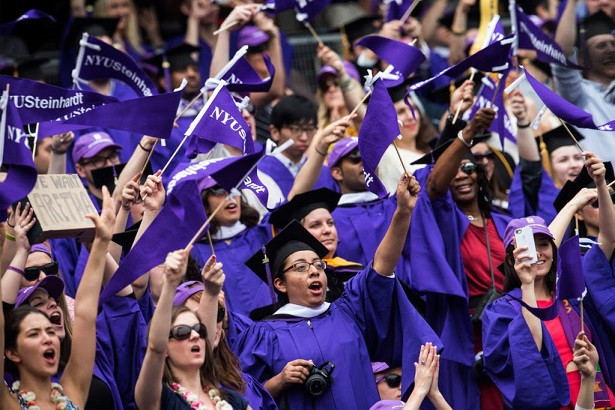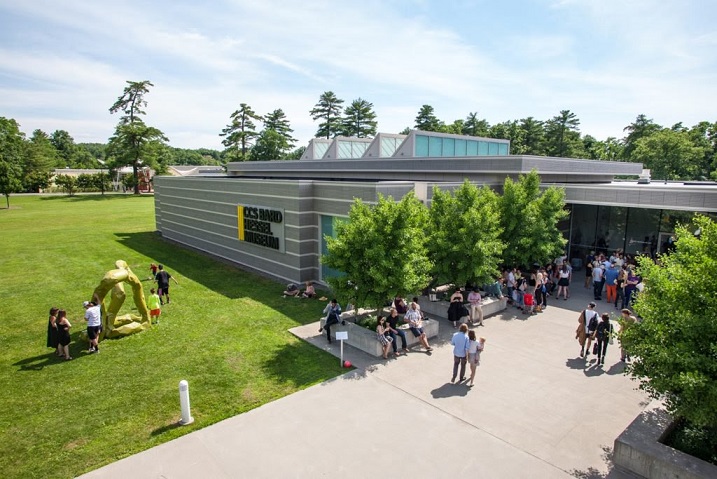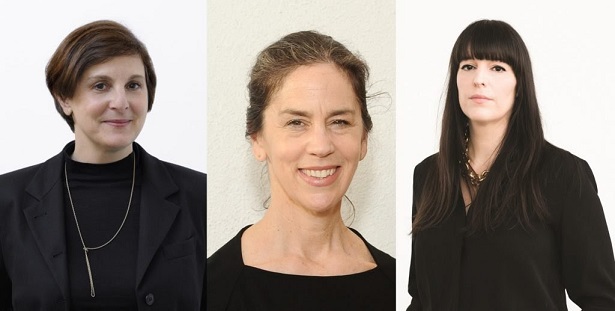There is no one path to success as a curator of contemporary art—but that doesn't prevent many top experts from having strong opinions.
Top curators, including Thelma Golden, Harald Szeemann, Marcia Tucker, and more.
These days, it feels like you can’t swing a canvas tote without hitting a newly credentialed curator. As art institutions expand and biennials proliferate, the population of curators has grown in lockstep. According to the US Bureau of Labor Statistics, there are now more than 12,400 full-time curators in America.
That figure is only expected to grow. The bureau has estimated that the number of people practicing the profession will increase by 14 percent between 2016 and 2026—twice the average growth rate for jobs in the US.
But for many, the path to a full-time curator gig is not linear. Curators who specialize in contemporary art, in particular, lack an obvious trajectory. How do you become an expert in art that may not even exist yet?
The Numbers
To find out, we examined the educational histories of 100 curators who specialize in contemporary art at 69 fine art museums in 32 states. We found that there is no one way to become a curator—although many of the experts we spoke with had strong opinions about what kind of education is most useful.
One thing quickly became clear: You don’t need a PhD to succeed as a contemporary art curator. Only 27 percent of those we surveyed had one. Fifty percent had a master’s degree as their highest level of education. The remaining 33 percent had bachelor’s degrees or visual art degrees, also known as BFAs.
The schools these curators attended also varied widely, with no clear winners. The most popular master’s program was the Center for Curatorial Studies at Bard College—but only five of the 100 curators on our list attended. (Williams College came in second, with four curators.)

New York University’s commencement in 2014. The university’s Institute of Fine Arts was the most popular PhD program among curators we examined. (Photo by Andrew Burton/Getty Images)
The most popular PhD program was the Institute of Fine Arts at New York University, with three graduates: Carol Eliel of the Los Angeles County Museum of Art, Nora Burnett Abrams of the MCA Denver, and Sabine Rewald of New York’s Metropolitan Museum of Art. Columbia University, the University of Delaware, and the CUNY Graduate Center in New York tied for second place with two PhD graduates each.
This broad spread reflects a field that has become somewhat less regimented as it has grown. “The professionalization of the curatorial world has yielded many benefits,” says Joanne Heyler, the director of the Broad in Los Angeles. “But at the same time, there are people in the field who have made a huge difference who, decades ago, might not have been given a chance because they wouldn’t have had exactly the right degree.”
Start With Art History
Many of the curators we surveyed about their educational experiences did home in on one message: If you want to succeed as a curator, you must begin with a solid grounding in art history.
“Artists draw on historical conventions, so to understand today you have to understand what happened in the past,” says Brooklyn Museum contemporary art curator Eugenie Tsai.
Plus, she adds, you never know where you might end up. Now stationed at an encyclopedic museum, Tsai says she “sorely regrets” not boning up on Asian and African art while earning her PhD at Columbia University.
Most curators agree that art historical expertise is an essential tool to determine whether a contemporary artist will stand the test of time.
“In the studio of a contemporary artist, the conversation isn’t really about whether or not their work of art will be relevant forever,” notes Laura Hoptman, a curator of painting and sculpture at the Museum of Modern Art in New York. “But if you’re building an institutional collection that will be significant more than five years down the road, you have to look at things with different eyes.”
Left to right, Laura Hoptman, Connie Butler, Eva Respini. Hoptman photo Martin Seck; Butler photo Stefani Keenan; Respini photo Liza Voll.
Studying art history also provides a solid grounding in critical thinking and writing—important skills for any curator. But don’t worry about how to write an exhibition checklist or a loan agreement while you are still in school, veteran curators say. You can learn those skills once you’ve landed your first position (and, in any case, each institution does things differently).
“When working in a larger institution, especially those with collections, the art history degree remains an essential bedrock,” says Irene Hoffman, director and chief curator at contemporary art space SITE Santa Fe, who earned a master’s degree in art history at the Art Institute of Chicago.
Can You Actually Study Curating?
Meanwhile, a new trend has emerged over the past decade: the rise of degrees not in art history, but in curation.
“When I started here 12 years ago, there was still a question mark about the validity of programs like ours,” says Tom Eccles, the executive director at the Bard Center for Curatorial Studies in upstate New York. “Those question marks seem to have been more or less completely eradicated.”
Bard’s program encourages students to organize exhibitions at the on-campus Hessel Museum of Art and provides a front-row seat to day-to-day museum work ranging from making acquisitions to conserving art.
Tobias Ostrander, a curator at the Pérez Art Museum Miami and a Bard graduate, notes that a curatorial degree offers something distinct from—but just as valuable as—an art history diploma. In the simplest terms, curatorial studies is focused as much on the show—and the process of putting it together—as the art itself.

CCS Bard Hessel Museum. Photo Lisa Quinones.
“There’s the space to engage in theoretical exercise and critical thought that you may never have in the same way,” Ostrander says. Furthermore, visiting curators like Okwui Enwezor, Mary Jane Jacob, and Harald Szeemann offered Ostrander insight into the field’s increasingly theoretical and global approach.
Still, not everyone is convinced of the value of such programs. “I’ve hired graduates from Bard and Goldsmiths, but many other programs throughout the US seem like money-making ventures to support PhD programs,” says Eva Respini, the chief curator at the ICA Boston. “I don’t think they’re offering the right skills.”
Refining Your Skill Set
So what, exactly, are the right skills to succeed as a curator? And how should students work to cultivate them?
Veteran curators say you should seek out individual professors and curators you might want to work with as much as the program itself. Hoptman points out that many MoMA curators teach at art history programs like the IFA.

Curator Karen Serres at London’s Courtauld Gallery on March 18, 2015. (Photo by Ian Gavan/Getty Images for Eurostar)
Also take a look at the school’s overall philosophy. Courtauld grad Naomi Beckwith, now a curator at the Museum of Contemporary Art in Chicago, praised her alma mater for stressing more than just chronologies and theories.
“It’s an institution that’s deeply invested in making arguments about art,” Beckwith says of the London school. “I’ve held onto the idea that you have to have a voice in curating, and that you have to convince your audience that an exhibition is necessary, that it’s urgent.” (That skill could also come in handy when curators try to secure funding for exhibitions down the line.)
Lastly, make sure your program admits a wide variety of students with a range of backgrounds and experiences. “You could learn almost as much from your fellow students as from the professors,” says Catharina Manchanda, a curator of Modern and contemporary art at the Seattle Art Museum and an alumna of the CUNY Graduate Center.
This, of course, may be easier said than done. In recent years, many have noted the whiteness of the curatorial field in the US (84 percent of curators at US museums are white, according to a 2015 Mellon Foundation study). This and other statistics make clear that education is not the only factor that determines a curator’s professional path (connections and economic status play a role, too).
On-the-Job Training
Meanwhile, many note that some important skills are better learned outside the classroom—and inside the studio. Michael Rooks, a curator of Modern and contemporary art at Atlanta’s High Museum, says his BFA from the Art Institute of Chicago has been essential to his success. “To understand the dynamics of a studio visit,” he says, “it’s invaluable to know what it’s like to be the subject of such scrutiny, and to be able to parlay that knowledge into a meaningful and respectful exchange.”
But no matter how in-depth your knowledge of art history or curatorial practice, curators also concur that there are some skills you can’t acquire in school. High on that list: relating to boards and figuring out how to pitch prospective donors. (Indeed, this issue recently arose in the discussion surrounding the firing of MOCA’s former chief curator Helen Molesworth.)
Visitors at the Indianapolis Museum of Art. Image courtesy of Newfields.
“Those are a great part of all curatorial jobs now,” says Connie Butler, the chief curator at the Hammer Museum in Los Angeles. “And I don’t know how you teach that. So much of that is personality. You’re up to it or you’re not.”
Furthermore, curators say, the only way to really learn what works and what doesn’t in creating exhibitions is trying—and sometimes failing. The best way to figure it out, notes Michael Rooks, is “walking through the galleries and observing your audience.”
No degree will truly prepare you for that.
Research by Caroline Goldstein





